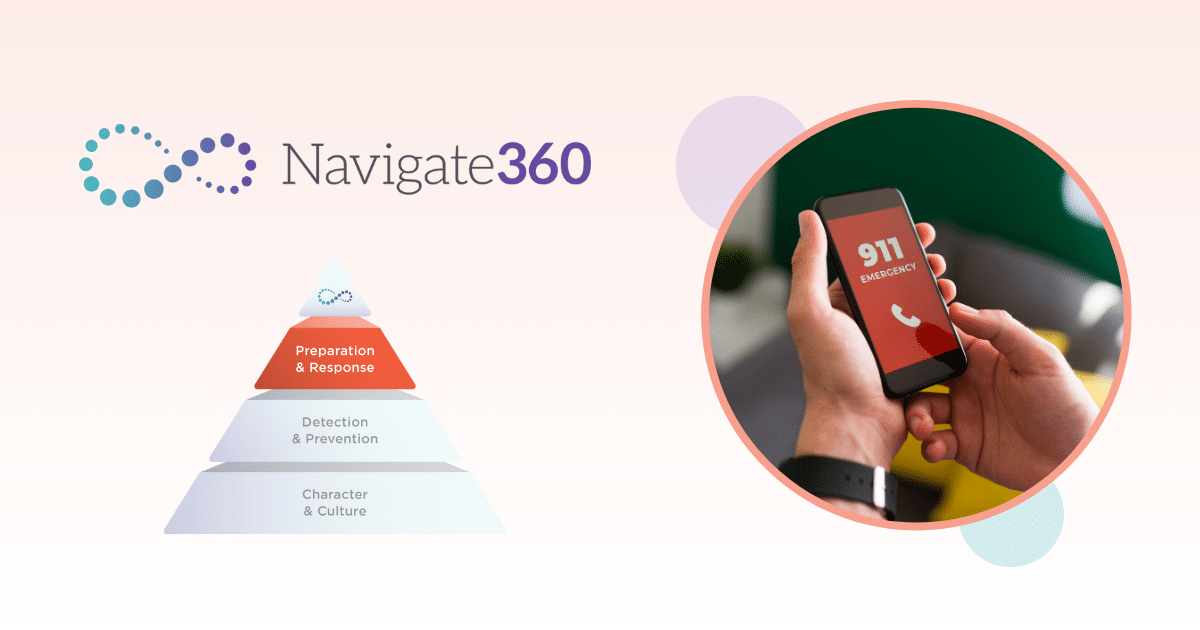5 Questions Every Parent Should Ask About School Safety Planning
Understanding how to keep schools safe is complicated, and whole-child safety, wellness and success takes the whole community. While any emergency is a difficult situation for parents and guardians to consider, you play a vital part in building a holistic culture of school safety, and it’s important to understand the plans in place to prevent, respond to and recover from an incident on campus.
School Safety Is Complicated, Understanding It Doesn’t Have to Be
When it comes to planning for how to keep schools safe, the list of factors to consider is lengthy. School officials should have plans in place for everything from early detection and intervention to communication with first responders, family reunification and ongoing support for those traumatized by violence on campus. This planning requires an extensive suite of solutions and teams of security and mental health specialists.
As a parent or guardian, it might seem overwhelming to know where to begin when trying to understand the school safety infrastructure on your student’s campus. Here is a list of questions that can help you begin the conversation.
What proactive measures are in place to maintain student safety?
There are many steps your student’s school can take to prevent violence. This includes assessing the school community’s physical and mental safety needs. Ask for details about the following:
- Full-scale professional risk assessment to understand the vulnerabilities of the campus, as well as to prioritize short- and long-term needs for improvements
- School safety software such as apps that enable
- A dedicated
- Suicide awareness & prevention curriculum
- Behavioral intervention supports for students experiencing a mental health crisis
What physical security measures are being taken to protect the campus?
Physical security is more than locked doors. Inquire about the additional steps your child’s school is taking to keep students and teachers safe. These can include:
- An effective visitor and volunteer management system that allows staff to know exactly who is on campus at all times
- Employing School Resource Officers (SROs) who are equipped with proper training to build relationships with students, deescalate potentially violent situations and facilitate rapid and effective response in the event of an emergency
What is the Emergency Operation Plan (EOP) and what checks are in place to make sure it is known and followed?
The federal government and state-level departments of education require that every district create an EOP that outlines how to keep schools safe by preparing for, responding to and recovering from an emergency of any kind. School staff should be trained on the contents of this emergency management plan as well as how to execute it. The school should also be coordinating with first responders, testing communication systems, conducting routine audits, running drills with students and staff, and maintaining up-to-date campus maps.
What steps are being taken to empower students and staff to stay safe until help arrives?
The average duration of a violent critical incident is 5 minutes – and the national average law enforcement response time is 3 to 5 minutes. During those precious minutes, it’s imperative that students and school staff are equipped to remain safe. Inquire about these possible solutions your student’s school can implement:
- Silent panic alert buttons that allow any staff member on campus to immediately connect to first responders
- Multi-option response training for active shooter situations that is trauma-informed and age- and ability-appropriate and enables students and staff to proactively participate in their own safety
- Flexible lockdown plans that empower students and staff to assess the situation and respond accordingly
In the event of an emergency, how will I be reunited with my student?
Delayed reunification after a violent incident can cause undue additional trauma to both students and their families. It’s important that your child’s school has a thorough plan in place to prevent this compounded harm to those involved. Ask specifically about these steps in Information Centers and
- How information about who is on campus will be accessed and verified
- How families will be notified and provided up-to-date information
- What the established evacuation routes are and what contingency plans are in place if they are not accessible
- How many reunification sites will be set up
- What mental health supports will be immediately available to students and families
- How emergency response teams are trained to ensure the reunification plan is followed
You Play an Important Role in Understanding How to Keep Schools Safe
There is nothing more important than the safety of your children and their peers, but the only path to that safety is whole-community cooperation. Taking the time to ask these questions of your school leadership will equip you with the knowledge necessary to support their efforts on campus, reinforce it at home and encourage your community to get involved in the work of school safety. If you’d like to learn more about the safety & wellness solutions you can advocate for, contact us today.




